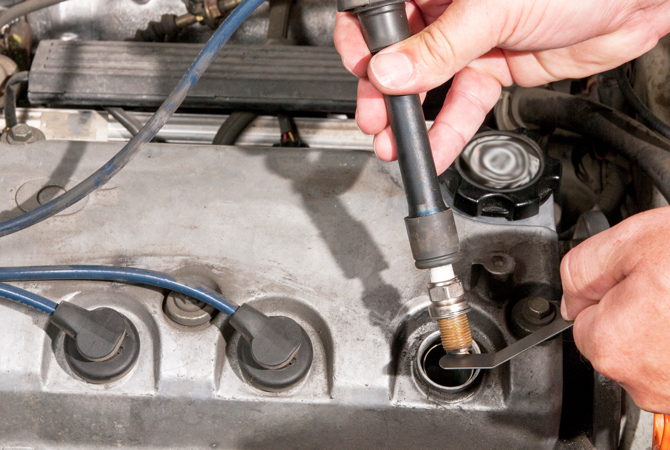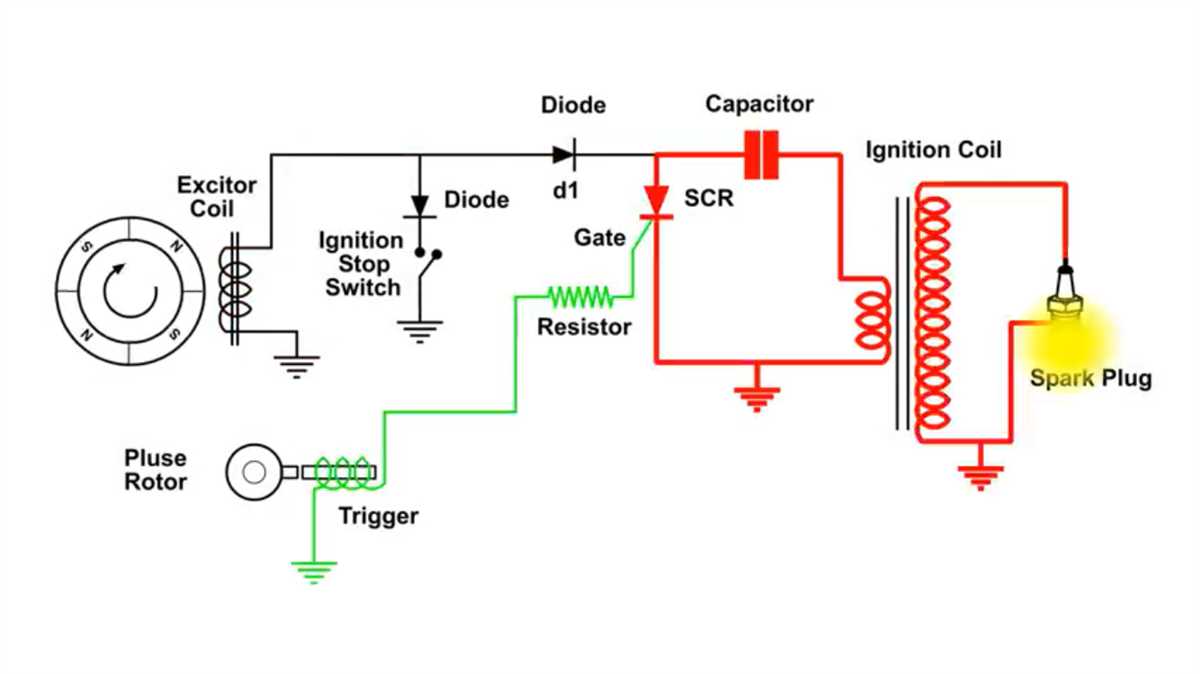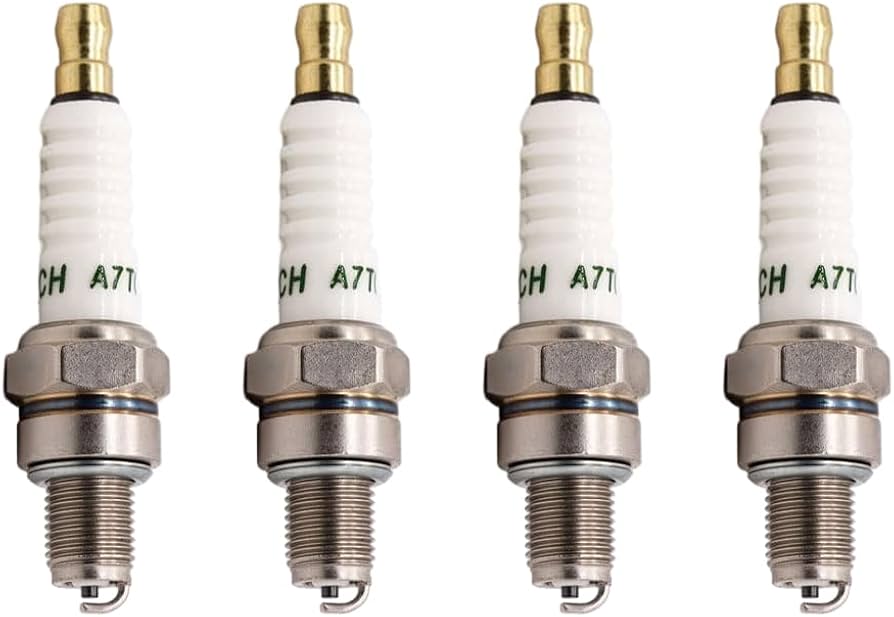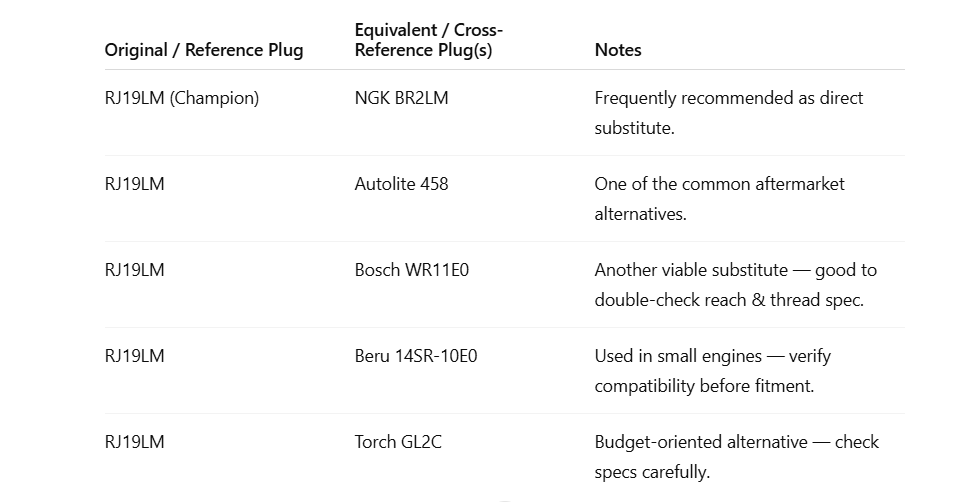How to access spark plugs: Locate the spark plugs, remove ignition components, unscrew the old plugs, and replace them with new ones. Reassemble the components afterward.
When it comes to keeping up your vehicle, spark plugs tend to be overlooked. However, these small components play a major role in your car’s overall performance. They are important in sparking the fuel and air mixture in your engine, which is necessary for your car to run smoothly. If spark plugs get dirty, worn, or faulty, they can create all sorts of problems like poor engine performance, low fuel economy, and car difficulty starting.
Learning how to access and replace spark plugs is a good skill to learn as a car owner, especially as it is relatively straightforward to replace your spark plugs and can save you money on mechanic visits. In this in-depth guide, we’ll guide you through the steps involved in accessing the spark plugs, removing the old ones, and installing new ones, all while keeping the process beginner-friendly.
By the end of this article, you’ll be able to keep the engine running at peak performance on your own without too much effort and cost.

Contents
- 1 Why Getting Access to Spark Plugs is Necessary
- 2 How to Access Spark Plugs
- 2.1 Step-by-Step Guide to Get Access to Spark Plugs
- 3 Common Mistakes to Avoid
- 4 Frequently Asked Questions
- 5 Conclusion
Why Getting Access to Spark Plugs is Necessary
Spark plugs are an important part of the vehicle’s ignition system. They provide the spark that ignites the air/fuel mixture in your engine’s cylinders. Over time, spark plugs can wear out from heat, pressure and contaminants, causing problems such as misfiring of the engine, poor fuel economy and difficulty starting the engine.
By learning to access and replace spark plugs, you’ll be able to keep the car in top shape, save money on mechanic fees, and ensure that your engine performs optimally. Spark plug maintenance also helps you minimize the car’s emissions, making it environmentally friendly.
How to Access Spark Plugs
Before you get started, it’s important that you have the right tools. Here’s a list of the tools that are needed:
- Spark Plug Socket (Usually 5/8″ or 13/16″ with a rubber insert to hold the spark plug)
- Ratchet Wrench (To loosen and tighten the spark plugs)
- Extension Bar (Aids in reaching hard to reach plugs)
- Torque Wrench (To tighten the new spark plugs properly)
- Spark Plug Gap Tool (To Measure the gap of the new spark plugs)
- Anti-Seize Lubricant (Prevents the spark plugs from seizing)
- Dielectric Grease (Used to lubricate ignition parts)
Step-by-Step Guide to Get Access to Spark Plugs
Accessing spark plugs can feel like a daunting task, but with the appropriate tools and a well-laid out process, it’s a manageable job that can improve the performance of the vehicle. Below is a detailed and easy to follow guide for you to help you get the spark plugs safely and efficiently.
1. repare the Vehicle
Before you begin working on the car, make sure that you prepare it appropriately so that you will be safe and efficient in the process.
Park the Car: Make sure that the car is on a flat, stable surface so that it doesn’t roll anywhere. Use a parking brake.
Turn Off the Engine: Let the engine cool down before you start working. Hot engine components can burn your skin, so it’s important to wait.
Disconnect the Battery: It is very important to disconnect the battery to prevent any accidental electrical mishap. Removing the negative terminal is usually sufficient.
2. Locate the Spark Plugs
Spark plugs are normally situated at the top of the engine. The location will vary depending on the type of engine, but here’s how you can locate them:
Open the Hood: Start by opening the car’s hood and fixing it with the prop rod.
Locate the Ignition System: In most cars, ignition coils or spark plug wires are connected to the spark plugs.
Remove Any Obstructions: If the vehicle has any engine covers or components that block access to the spark plugs, you’ll need to remove these first. Check the owner’s manual to see if there are any special steps.
3. Remove the Ignition Components
There are two basic types of ignition systems: spark plug wires and coil-on-plug systems. The procedure of removal of ignition components is slightly different for both of them.
Spark Plug Wires
Spark plug wires are an essential component of your ignition system, and they are responsible for delivering electricity from your ignition coils to your spark plugs. If your car has spark plug wires, knowing how to properly remove and reinstall them is essential to keep your engine running at its most efficient. Let’s get down to the steps to handle spark plug wires safely.
Grab the Boot, Not the Wire: Grab firmly on the boot (the rubber part) that connects the wire to the spark plug, and pull it straight off.
Set Aside: Put the wire somewhere safe, make sure you don’t stretch or damage it.
Coil-on-Plug Systems
Many modern vehicles use coil-on-plug systems, which do away with the need for spark plug wires. These systems are more efficient and can be easier to maintain, but to access them a slightly different approach is needed. Here’s how you can safely remove and replace parts in a coil-on-plug system.
Disconnect the Electrical Connector: Use your hand or a flathead screwdriver to disconnect the electrical connector from the coil.
Remove Any Securing Bolts: Some coils are held in place by small bolts. Use the right tool to unscrew and remove them.
Pull Out the Coil: Slowly pull the coil straight up. It may take a little wiggling but don’t use too much force.
4. Remove the Old Spark Plugs
Once you have the ignition components out of the way, it’s time to remove the old spark plugs. Here’s how:
Clean the Area: Use compressed air or a clean cloth to remove any debris or dirt from the area surrounding the spark plug. This keeps dirt from falling into the engine when removing the spark plug.
Loosen the Spark Plug: Secure the spark plug socket to your ratchet wrench. Use a firm and counterclockwise turn to loosen the spark plug. It may take some force, but take care not to put too much pressure.
Remove the Spark Plug: Once you have loosened the plug, carefully pull it out. Be sure to keep the plug in the upright position to avoid oil or other contaminants from spilling.
5. Inspect the Spark Plugs
This is an important step of the process as the condition of the old spark plugs can tell you a lot about how healthy your engine is:
Normal Wear: A slightly worn plug that is clean with a light tan or gray color is an indication of normal operation.
Black or Oily Deposits: This can indicate an oil leak or rich air-fuel mixture. This may be a sign of a misfire or bad spark plug.
Damaged or Cracked Insulator: A cracked insulator indicates serious heat or damage and the spark plug should be replaced as soon as possible.
6. Install the New Spark Plugs
Now that you’ve removed the old spark plugs, it’s time to get the new ones in place. Follow these steps for a proper installation:
Check the Gap: New spark plugs come already gapped, but it’s always a good idea to check the gap with a spark plug gap tool. Refer to your vehicle’s specifications for the proper gap.
Lubricate the Threads: Lubricate the threads of the spark plugs with a little anti-seize lubricant. This will aid in removal in the future.
Hand Thread the Spark Plug: Carefully thread the new spark plug back into the hole by hand Be sure it’s aligned properly before you tighten to avoid cross-threading.
Tighten with a Torque Wrench: Use the torque wrench to tighten the spark plug to the manufacturer’s specifications. Over-tightening can lead to damage to the threads, while under-tightening can lead to poor performance.
7. Uninstall and reinstall the Ignition Components
Once the new spark plugs are installed, it’s time to put the ignition parts back in place:
Coil-on-Plug Systems: Carefully reinsert the coil and tighten any bolts you removed earlier. Reconnect the electrical connector.
Spark Plug Wires: Push the boot gently back on the new spark plug and make sure it’s secure.
8. Test the Engine
When all is said and done, it’s time to ensure that the spark plugs are functioning correctly:
Reconnect the Battery: If you disconnected the battery earlier, reconnect it.
Start the Engine: Turn the car’s engine on and listen for smooth idling. Check for any warning lights or engine misfires.
Common Mistakes to Avoid
Even a tiny error while carrying out spark plug maintenance can lead to serious engine problems. Whether it’s over-tightening the spark plug or not gapping it properly, these mistakes can impact the car’s performance. Here are some common pitfalls to avoid to make sure the spark plug replacement goes smoothly.
Over-Tightening Spark Plugs: This can strip the threads in the engine and cause serious damage.
Using the Wrong Spark Plug: Make sure that the replacement spark plug is the same model and specification as the one you’re replacing.
Not Checking the Gap: Even new spark plugs sometimes have an incorrect gap. Always check before installation.
Forgetting to Reconnect Components: Always ensure that the ignition wires or coils are properly connected before you close the hood.
Frequently Asked Questions
Here are some FAQs about how to access spark plugs –
1. Can I replace spark plugs without removing battery?
While it is possible to do this, it’s safer to disconnect the battery to avoid any chance of accidentally electrocuting yourself or others, especially if your car has coil-on-plug systems.
2. What if I can’t get to my spark plugs?
Some vehicles have a low amount of space around the spark plugs. In these cases, you may need to remove more or use an extension bar to access the plugs.
3. Is it necessary to use anti seize lubricant?
While it isn’t a requirement, it is good to use anti-seize lubricant to help prevent the spark plugs from seizing in the future, making removal easier during the next maintenance cycle.
4. What If My Car Won’t Start After I Replaced The Spark Plugs?
If your car misfires even after replacing your spark plugs, the issue may be elsewhere, like the ignition system or fuel injectors. Consider getting professionally diagnosed.
Conclusion
Replacing the spark plugs is a necessary component of your routine car maintenance. By following this step-by-step guide, you can easily access and replace your spark plugs and ensure that your car is running at peak performance. Regular maintenance such as spark plug replacement will help increase fuel efficiency, decrease harmful emissions and prolong the life of the engine.





